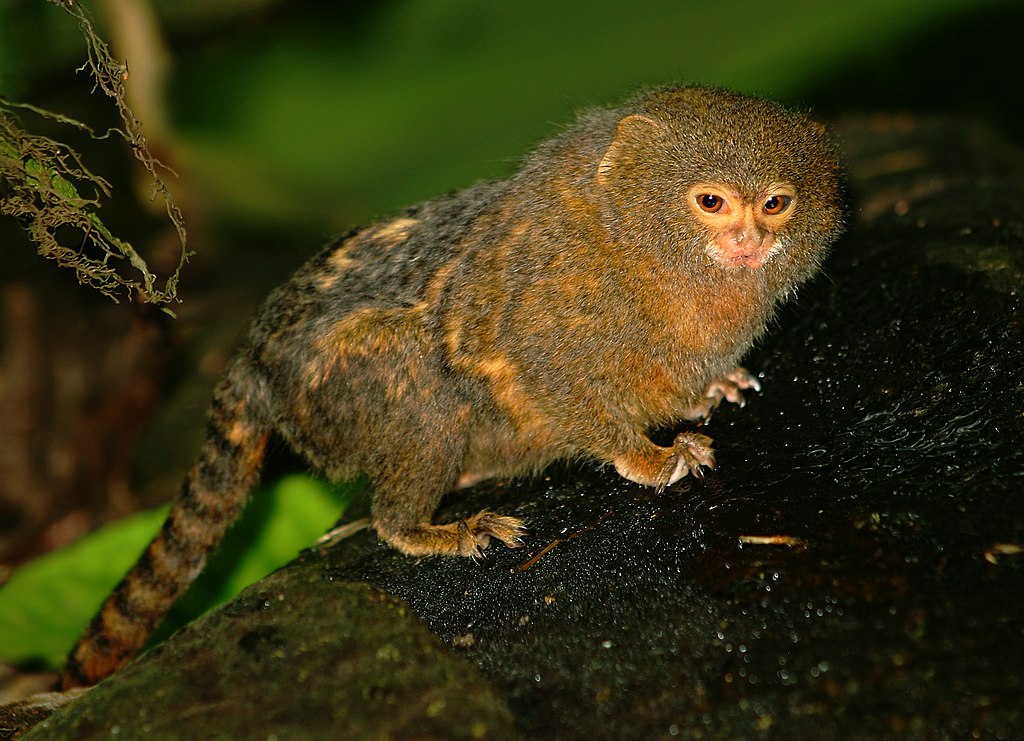
But the giraffe turned out to be four species. From ScienceDaily:
Evolutionary biologists have now discovered that the Pygmy Marmoset — the world’s smallest monkey — is not one species but two.
Weighing in at just 100 grams — roughly the size of a large tomato — the insect-eating primate was first described scientifically in 1823 by German naturalist Johann Spix as Cebuella pygmaea, with a sub-species subsequently found.
Now a team led by the University of Salford, using the latest techniques in genomics and phylogenetics, have established proof of two clades or branches of pygmy marmosets, that have diverged from one another around 2 — 3 million years ago.
The study was restricted to monkeys in the Brazilian Amazon, but there are indications that researchers may discover more species with further research in the forests of the other countries where they live.
Findings like this have serious implications for conservation, since population numbers essentially are halved when a species is suddenly split in two in the light of new scientific evidence. Luckily for the pygmy marmosets, the forests where they are found are amongst the best preserved patches of Amazon, the scientists say. Paper. (paywall) – Jean P. Boubli, Maria N.F. da Silva, Anthony B. Rylands, Stephen D. Nash, Fabrício Bertuol, Mário Nunes, Russell A. Mittermeier, Hazel Byrne, Felipe E. Silva, Fábio Röhe, Iracilda Sampaio, Horacio Schneider, Izeni P. Farias, Tomas Hrbek. How many pygmy marmoset (Cebuella Gray, 1870) species are there? A taxonomic re-appraisal based on new molecular evidence. Molecular Phylogenetics and Evolution, 2018; 120: 170 DOI: 10.1016/j.ympev.2017.11.010
More.
The pygmy marmoset’s conservation status may be upgraded to vulnerable now because the population has been split in half. Does that play a role in why speciation is currently such a mess?
It’s not made clear here whether the two groups can interbreed. What, exactly, are we trying to preserve?
Thought experiment: What if, using current methods, someone discovers that the eastern gray squirrel of North America is actually seven different species? Suddenly a life form that seems everywhere in the trees is much closer to extinction than we could ever have imagined. Or is there something wrong with the way we are looking at speciation?
See also: Shaking the horse family tree
At Nature: Much insect research could be impossible to replicate
Elephant family tree needs a rethink?
Speciation ain’t what it used to be. Neither is certainty about evolution.
New butterfly has 46 chromosomes, like a human, not the expected 68, like a close relative
DNA: Giraffes are four separate species?
More mammal species than we thought? But what defines a mammal species?
and
Nothing says “Darwin snob” like indifference to the mess that the entire concept of speciation is in